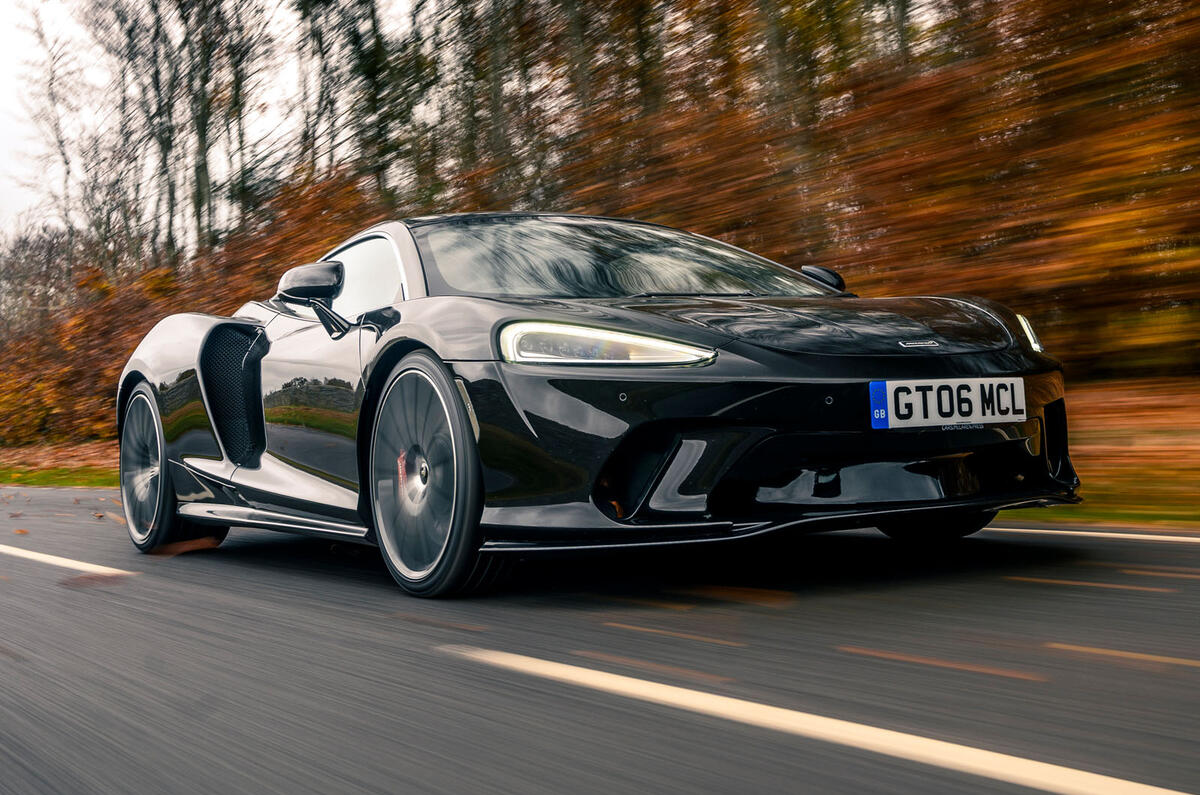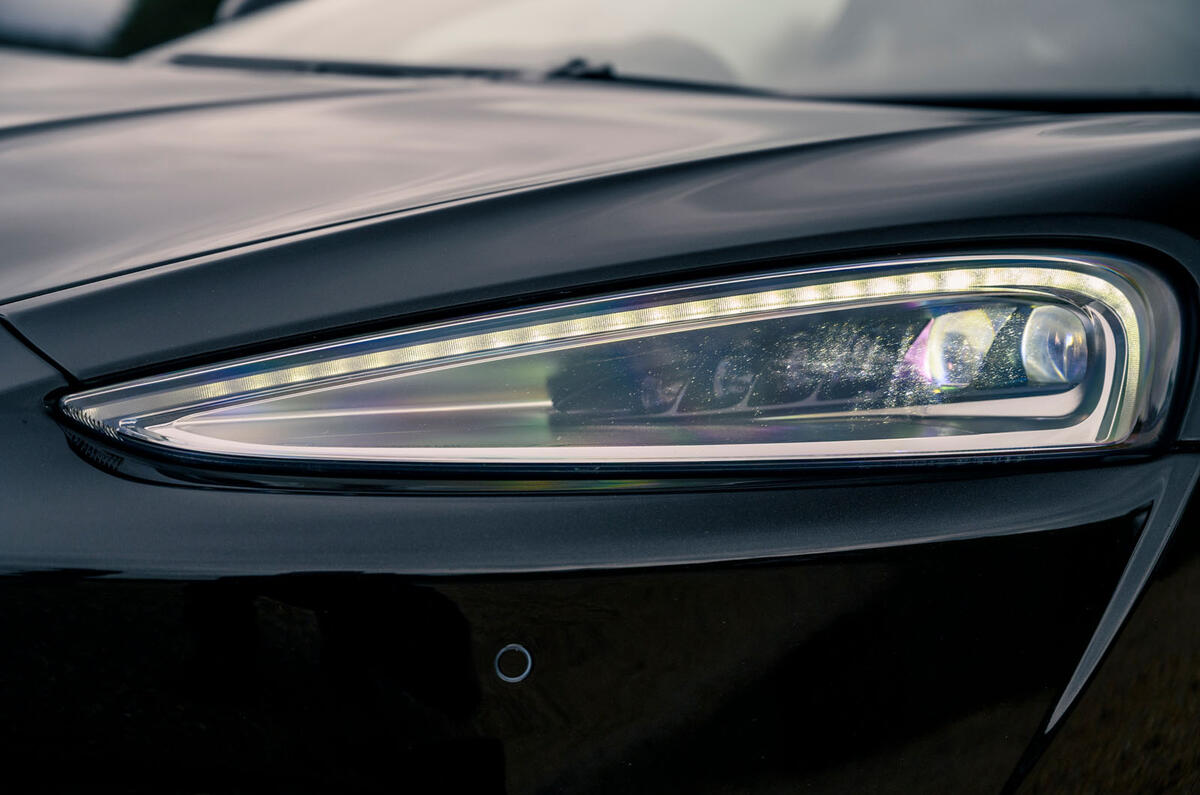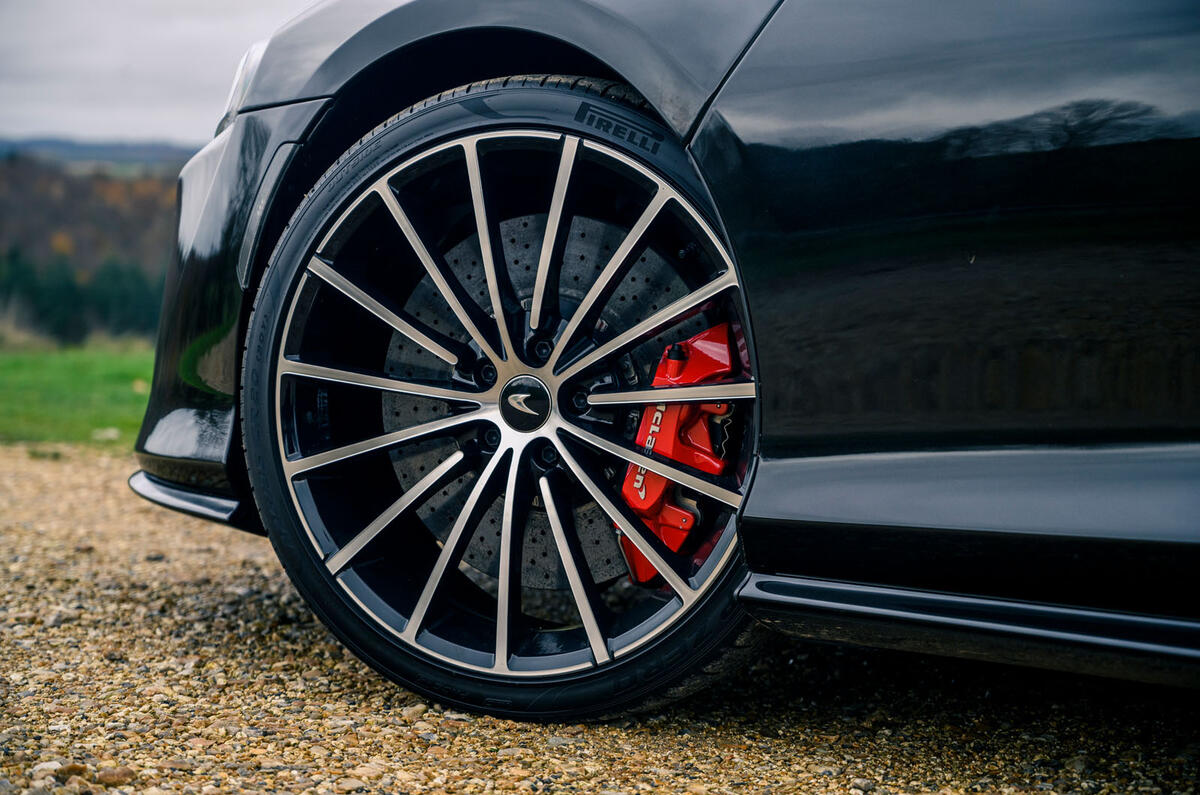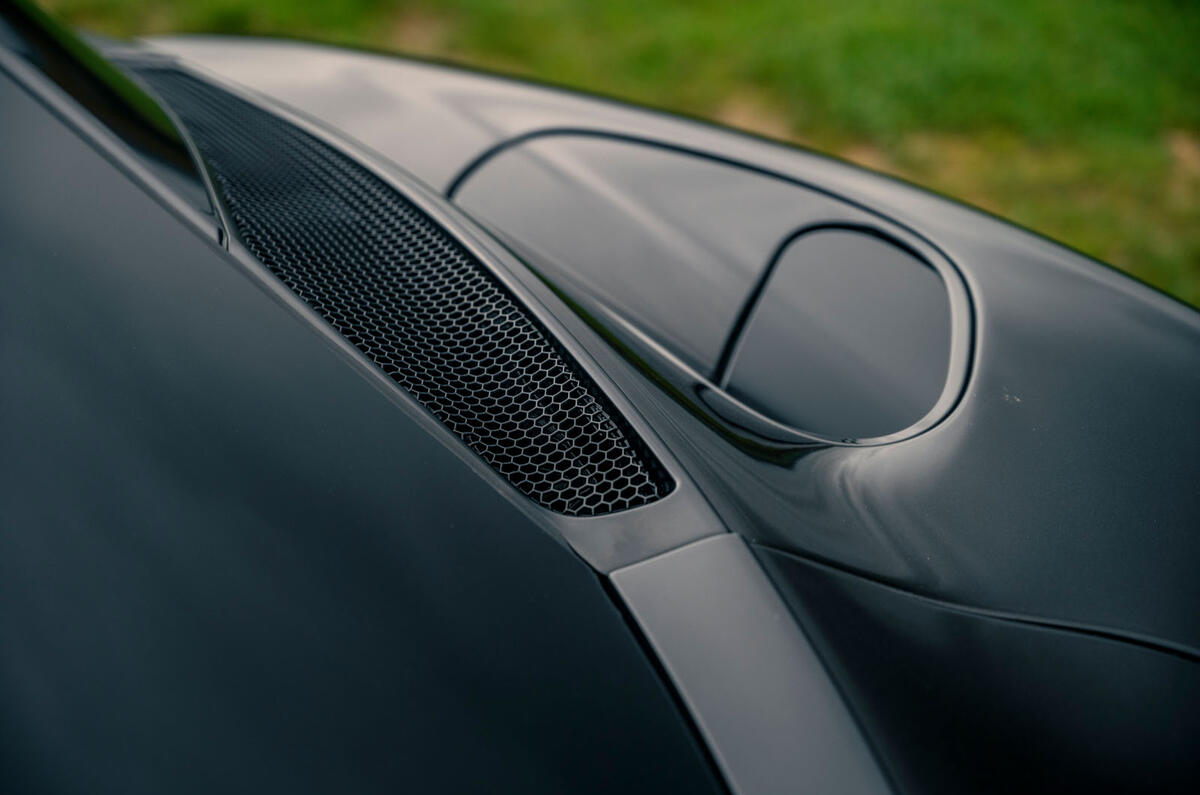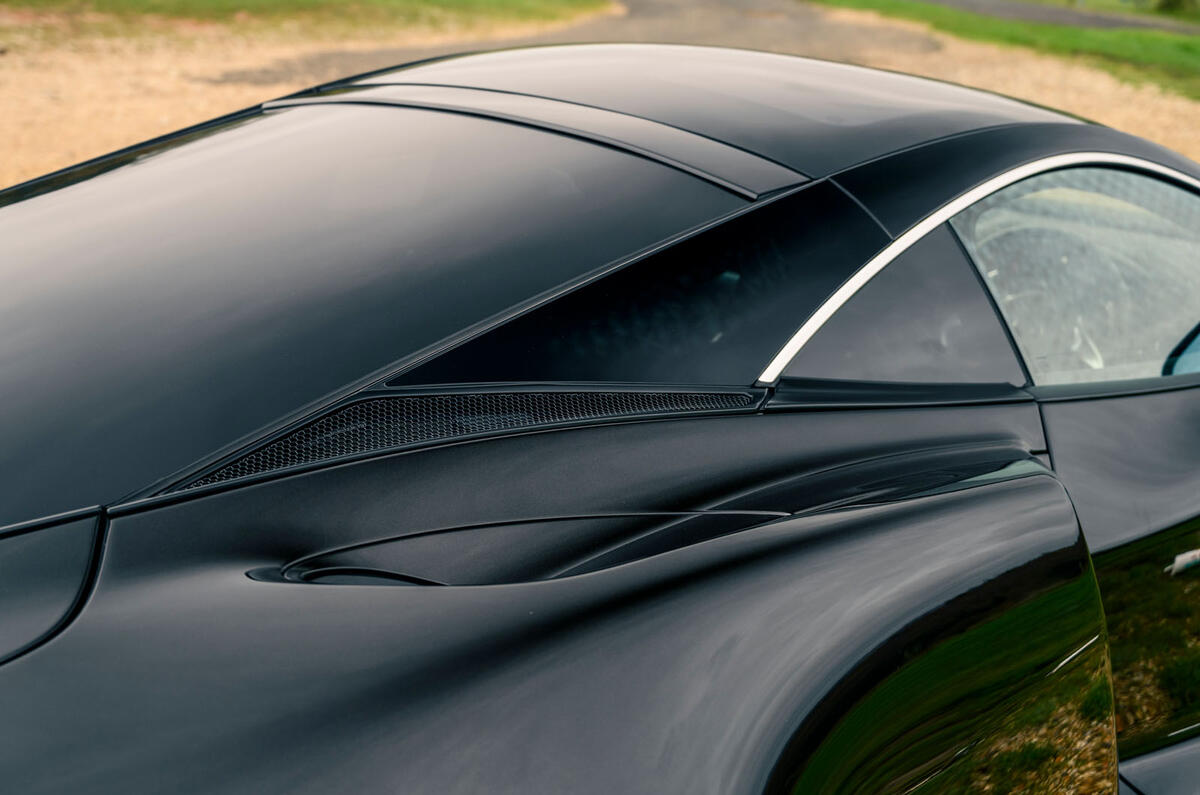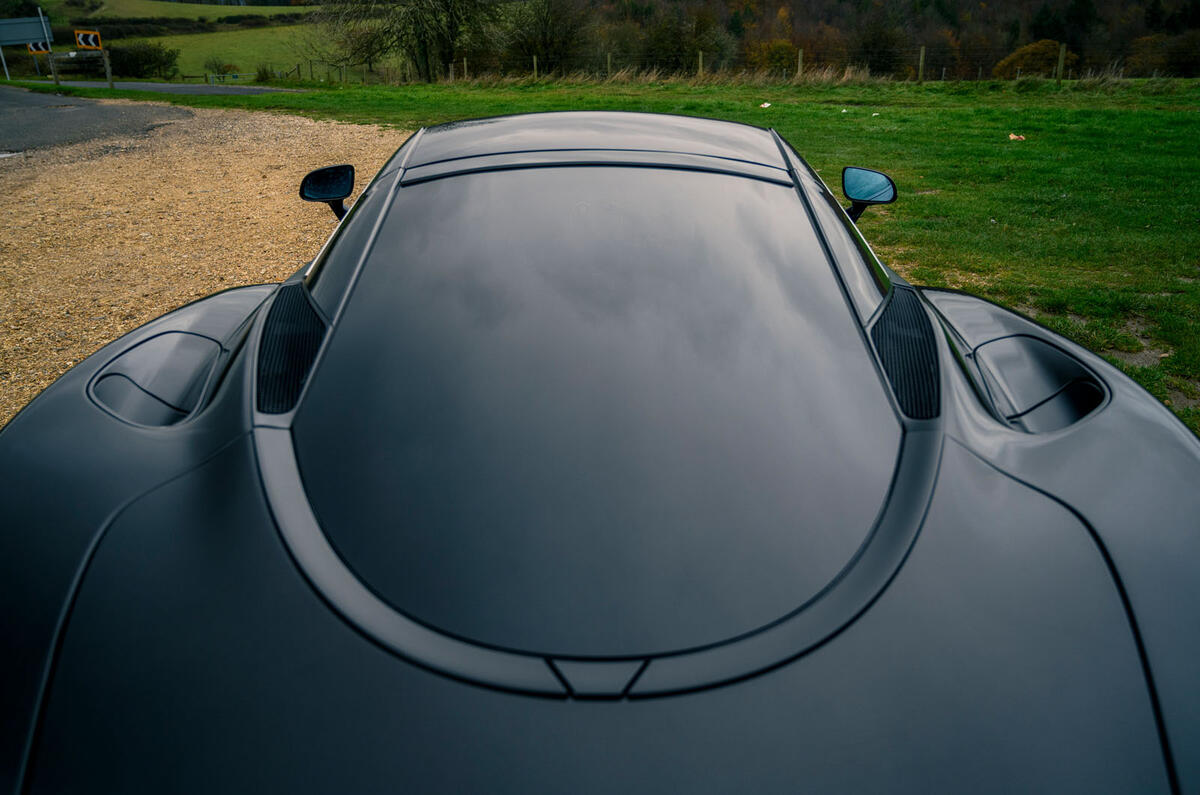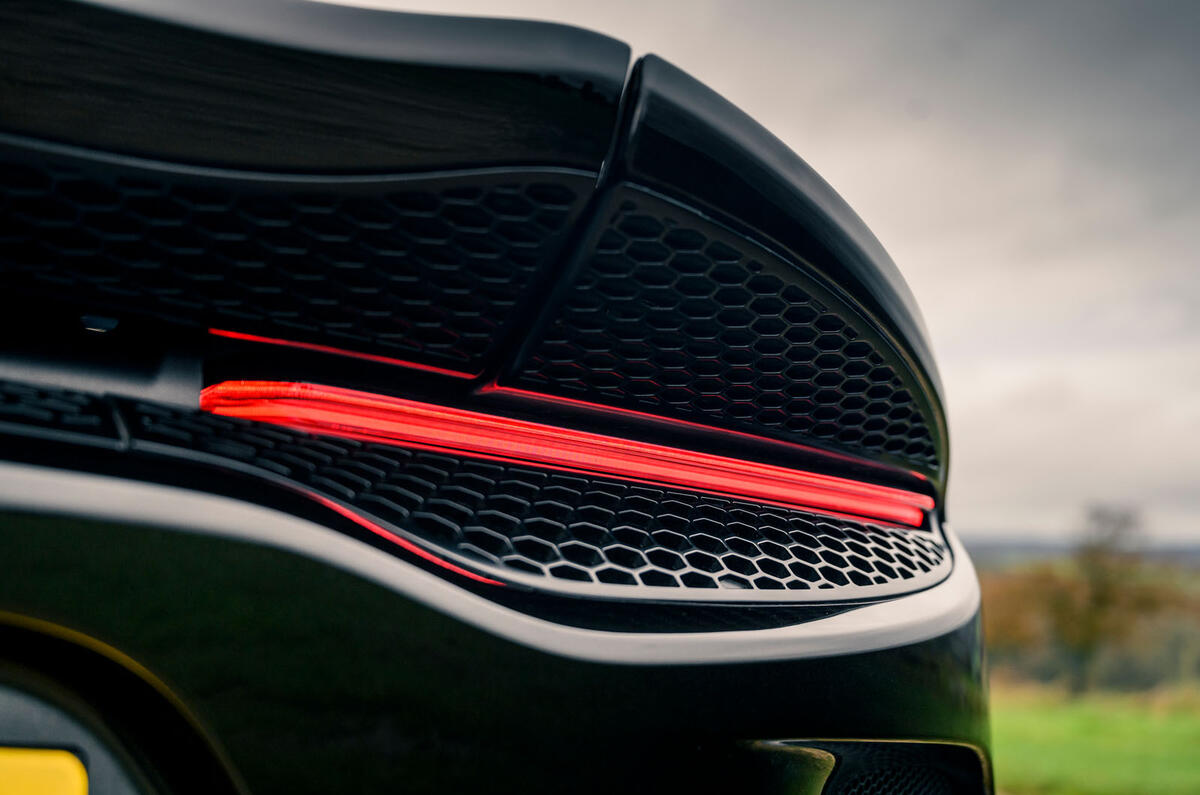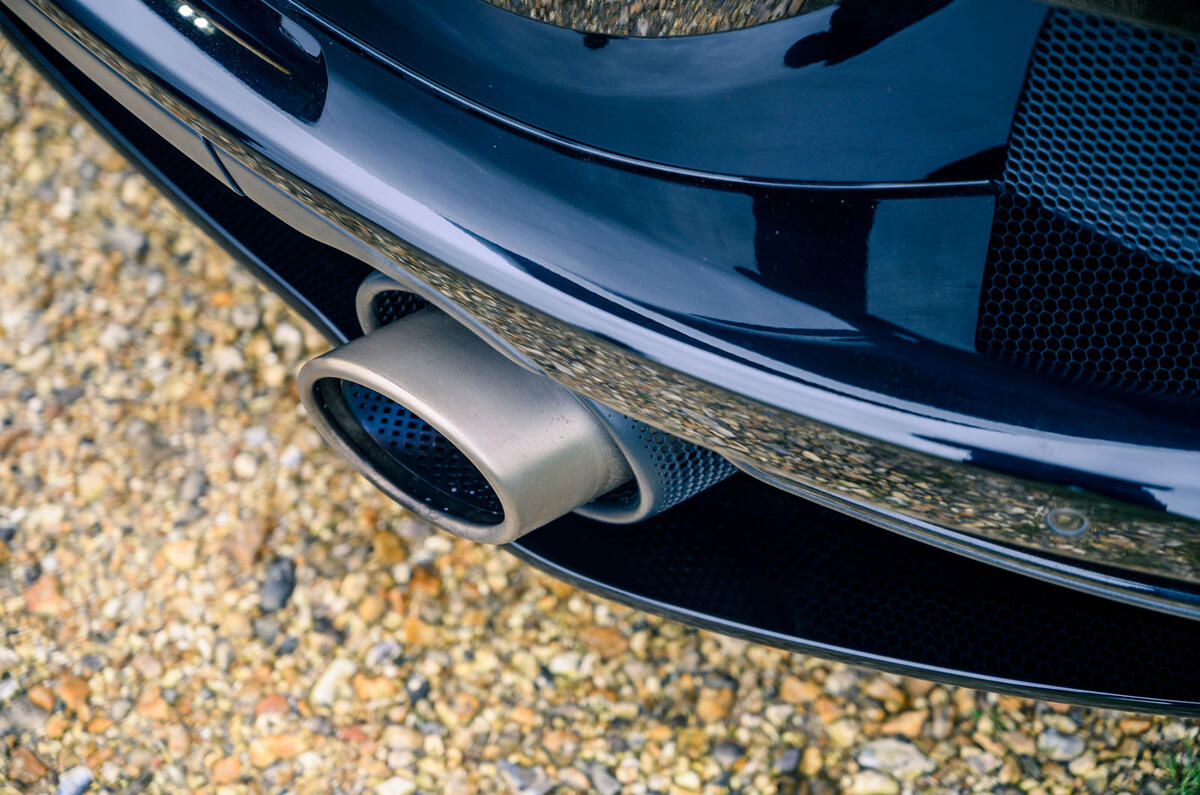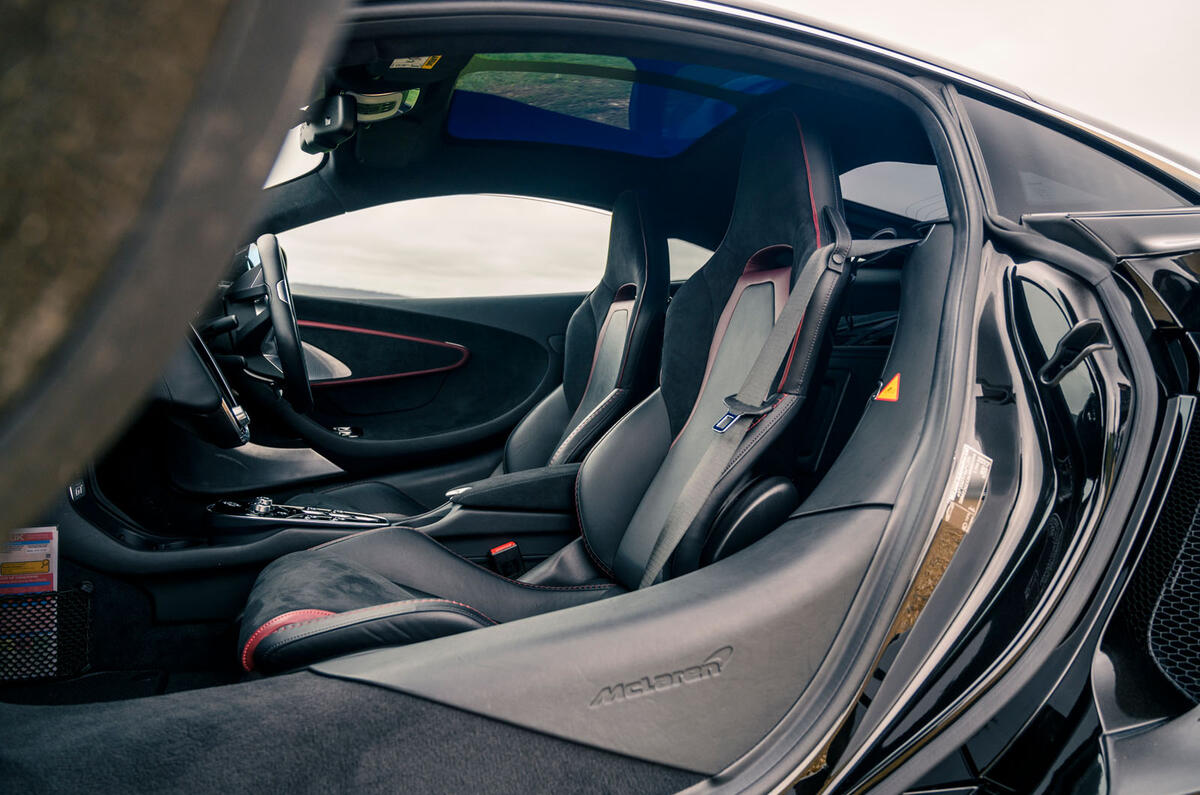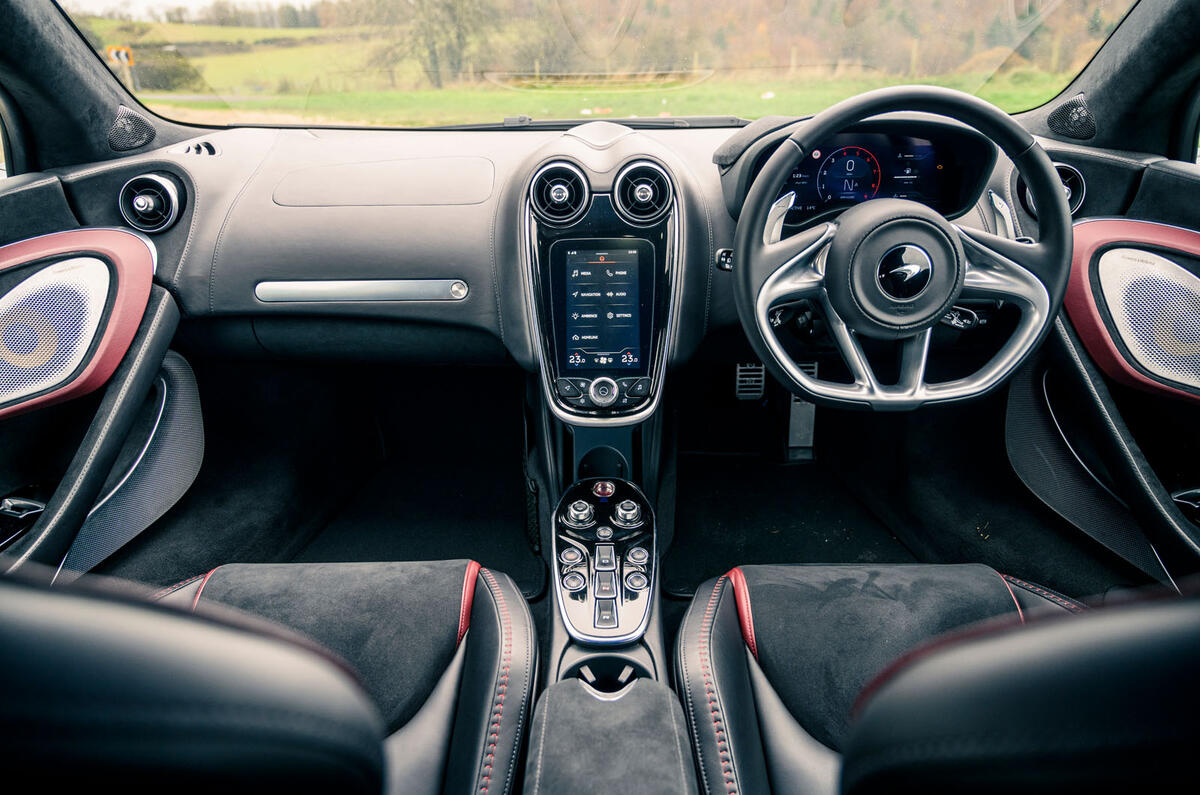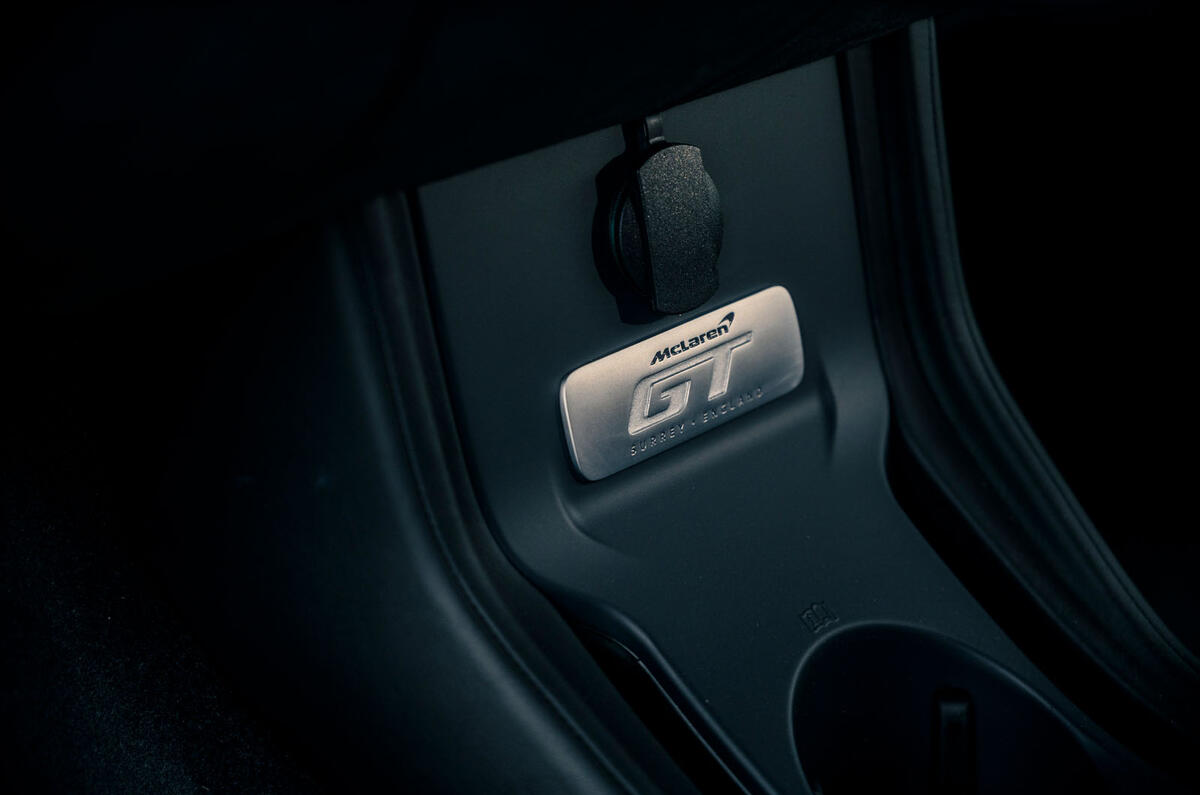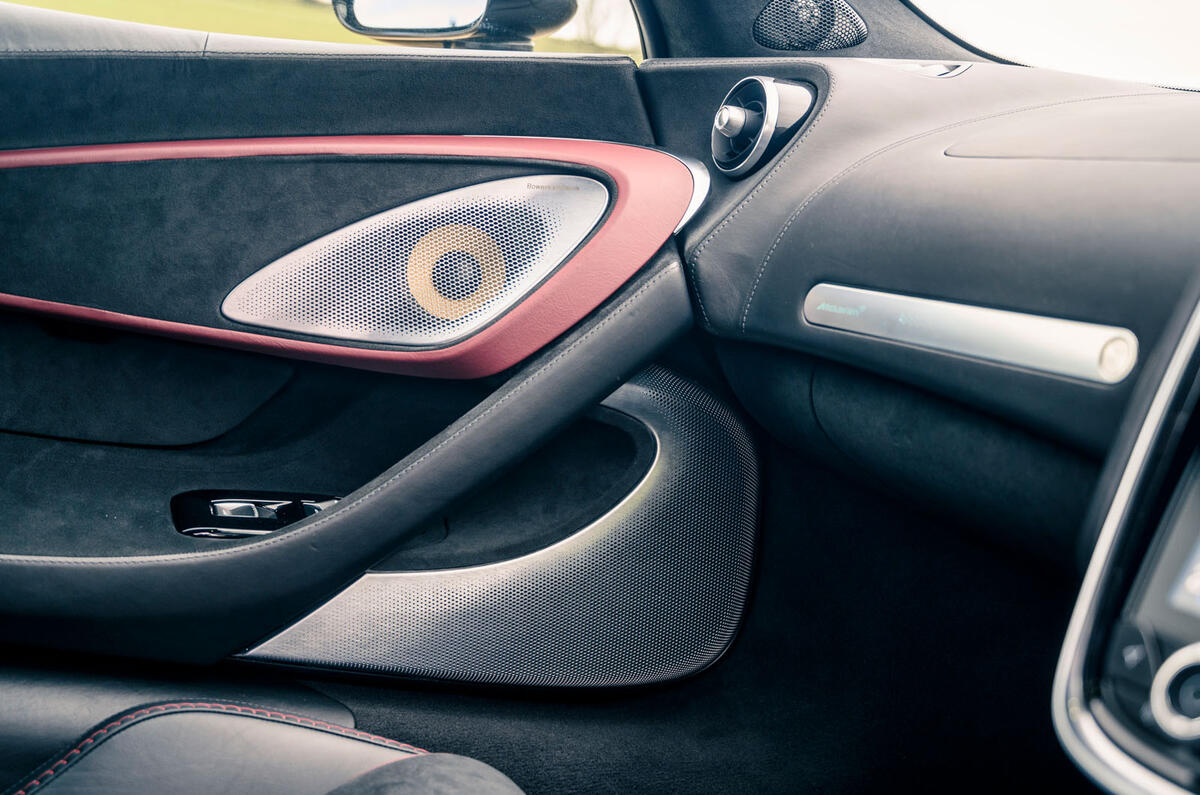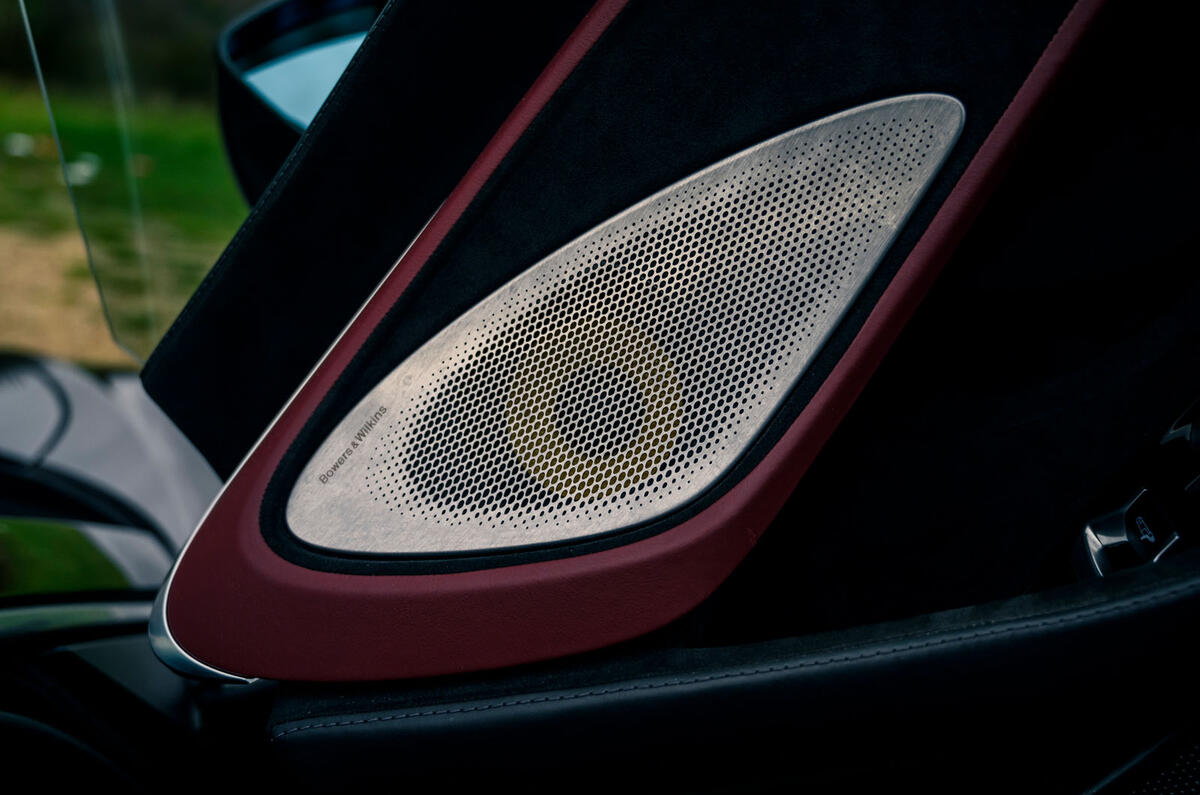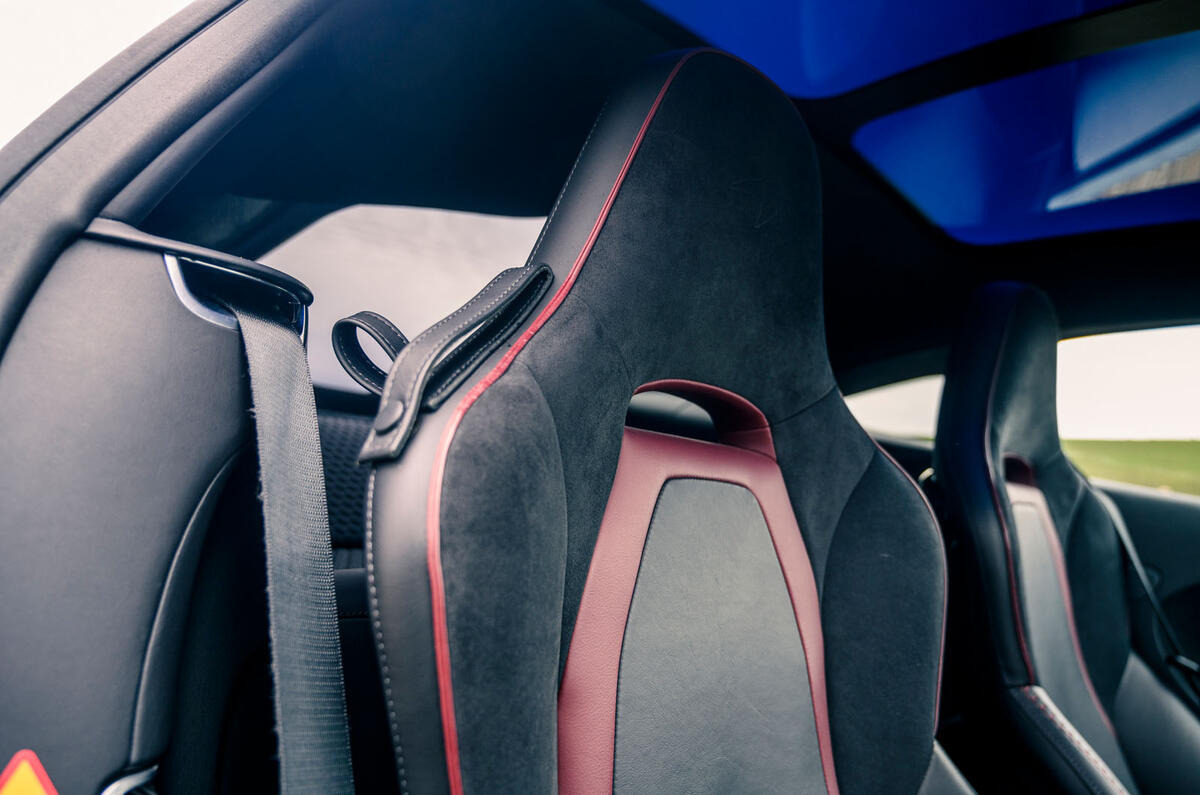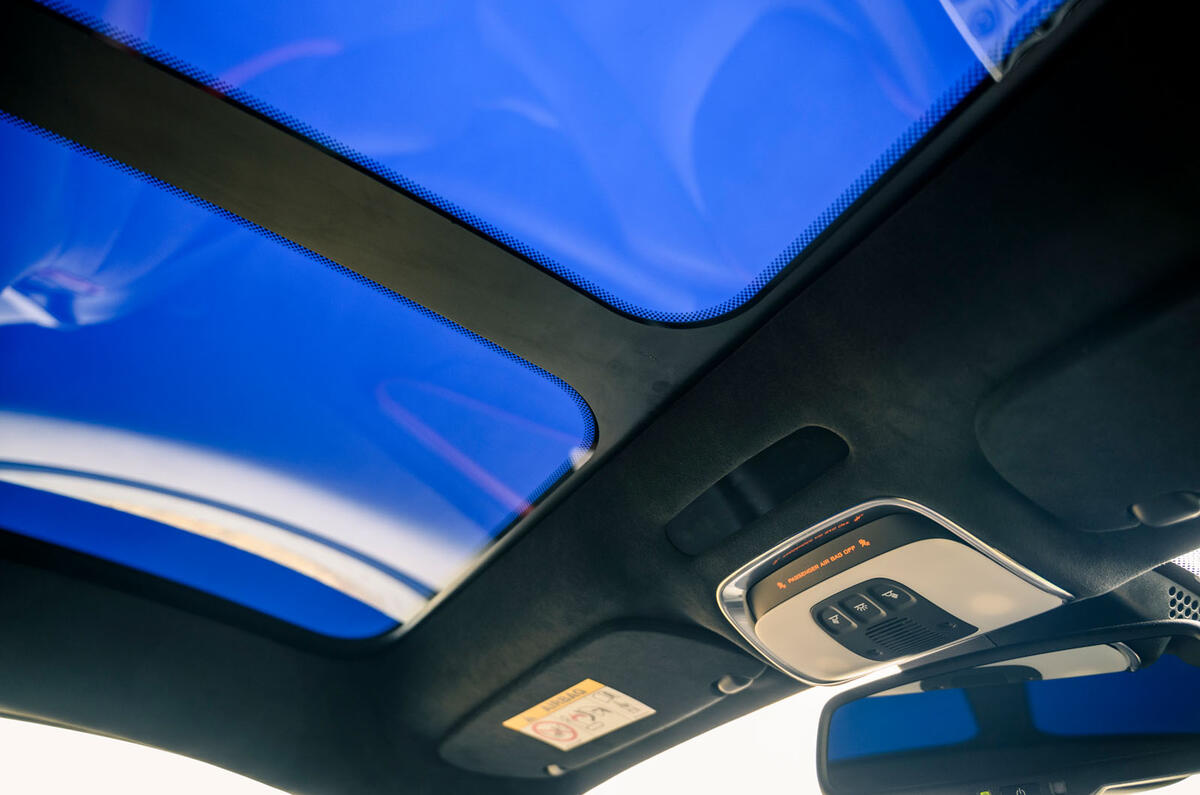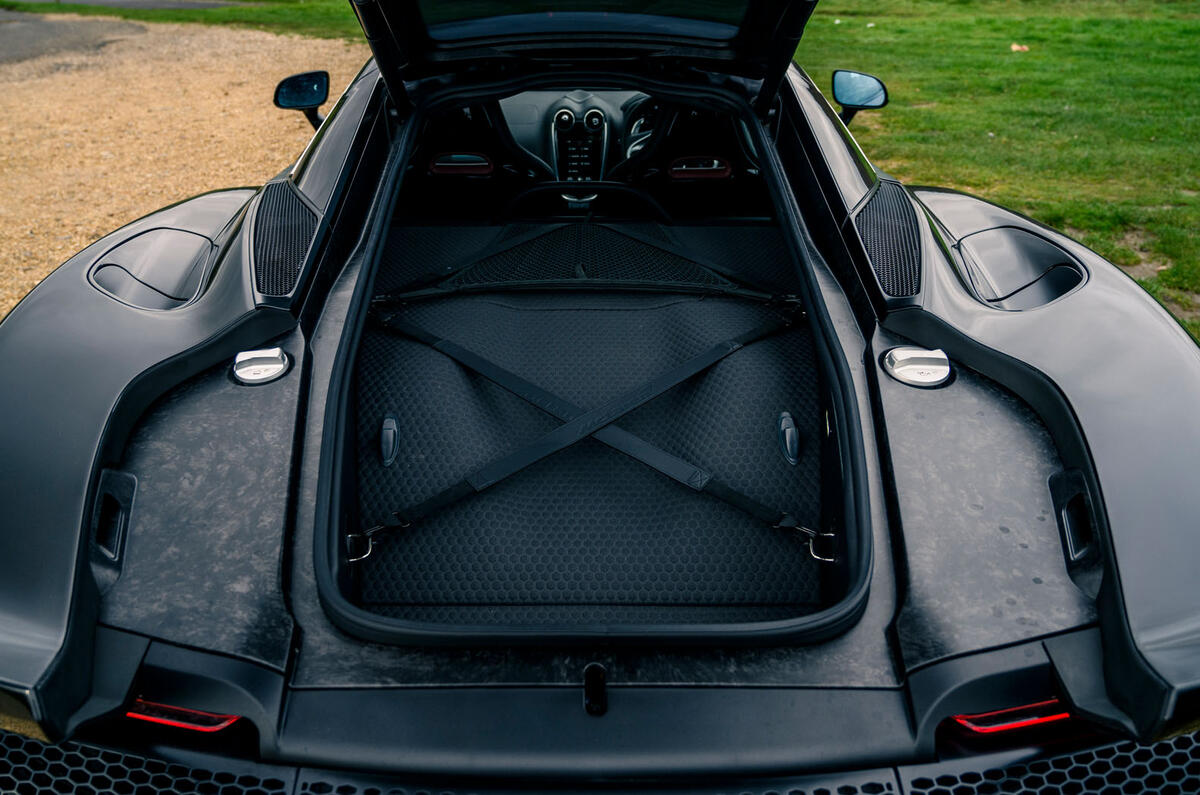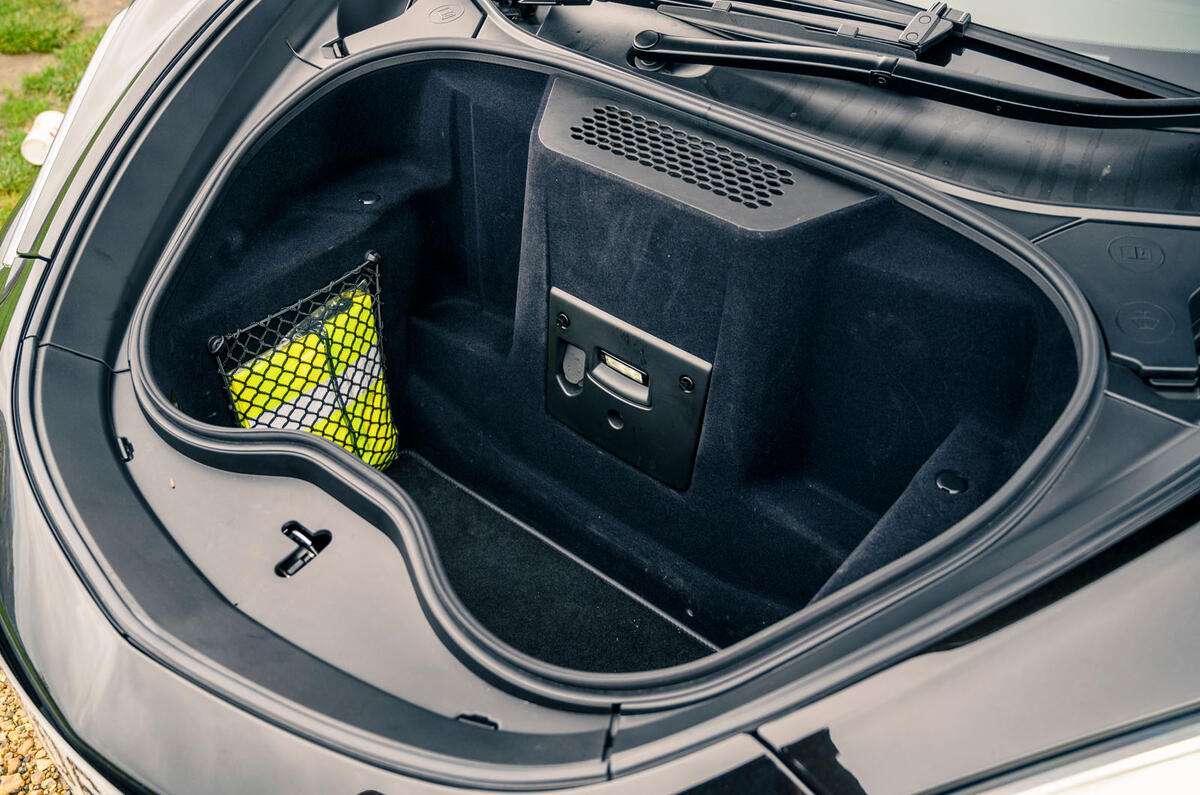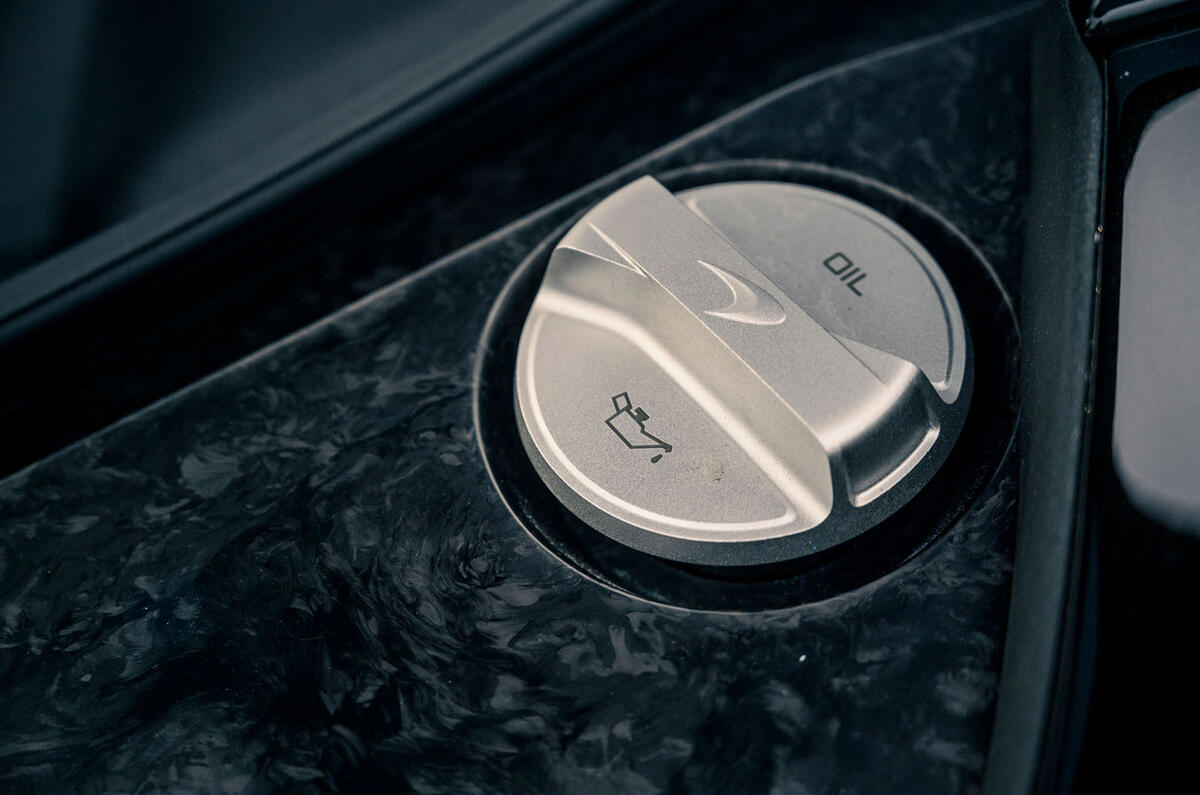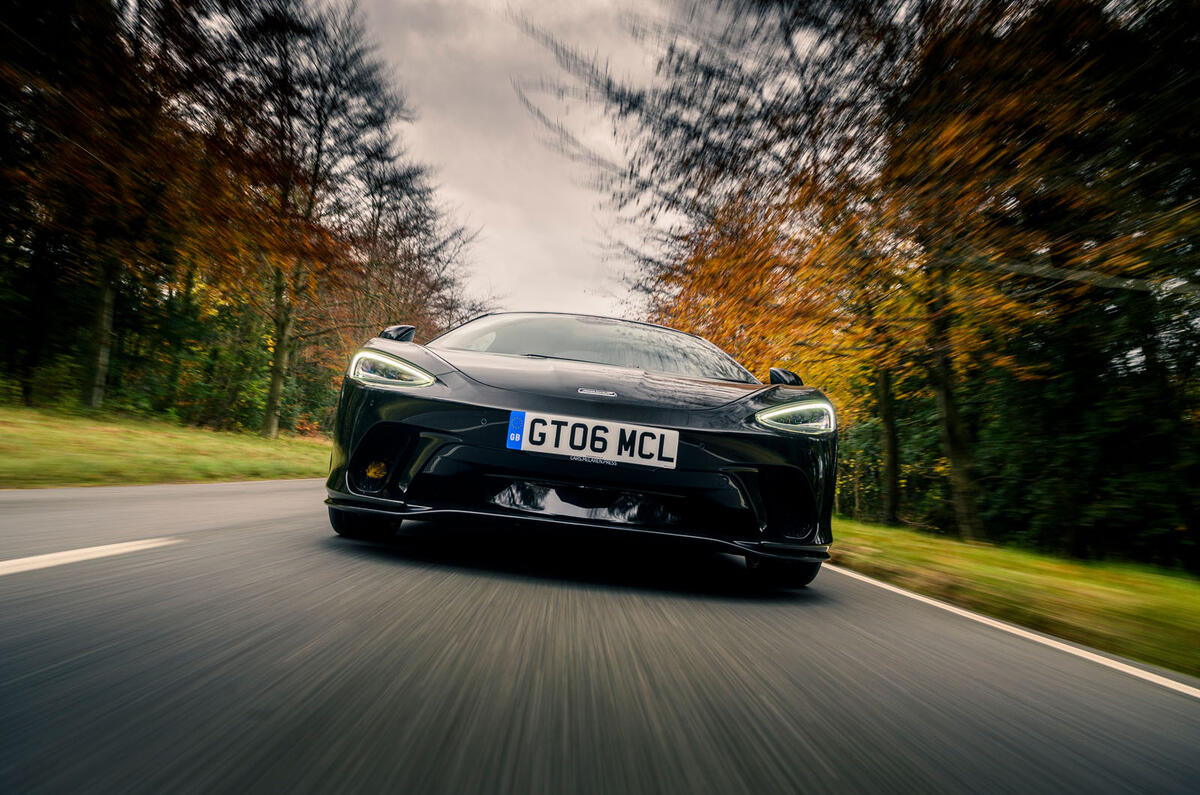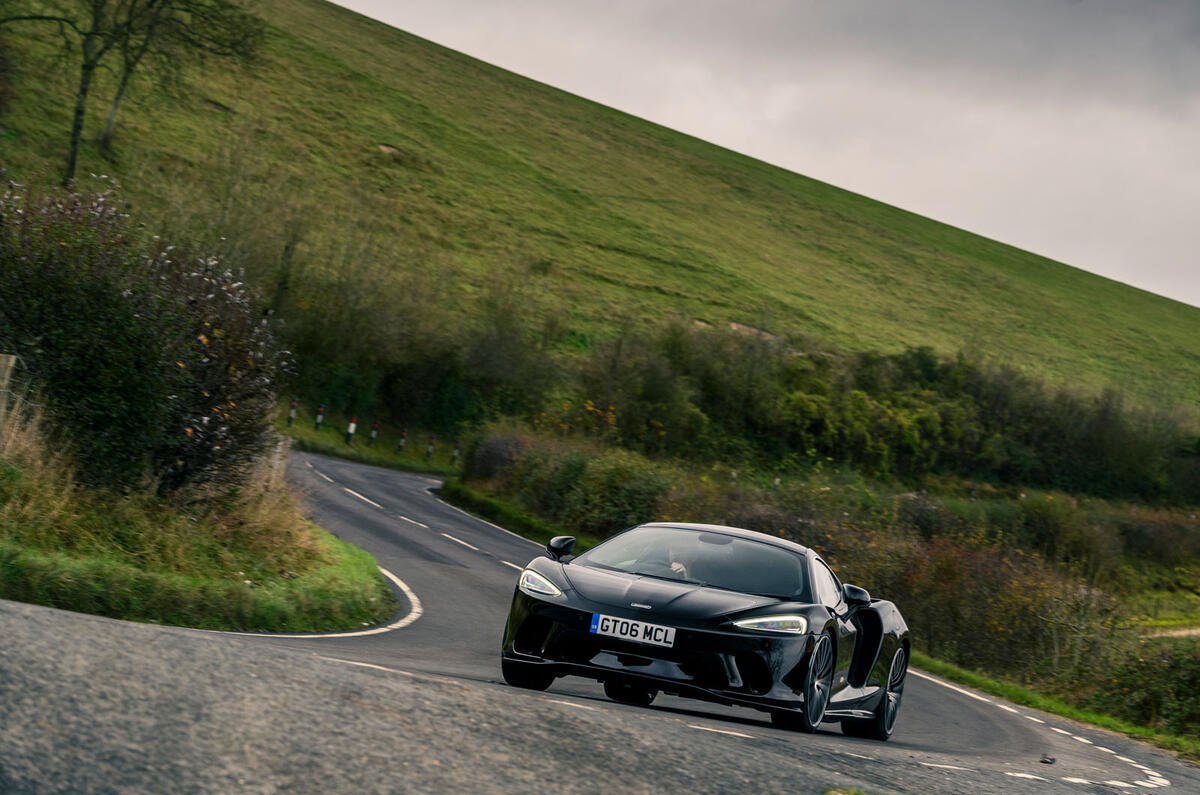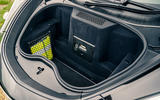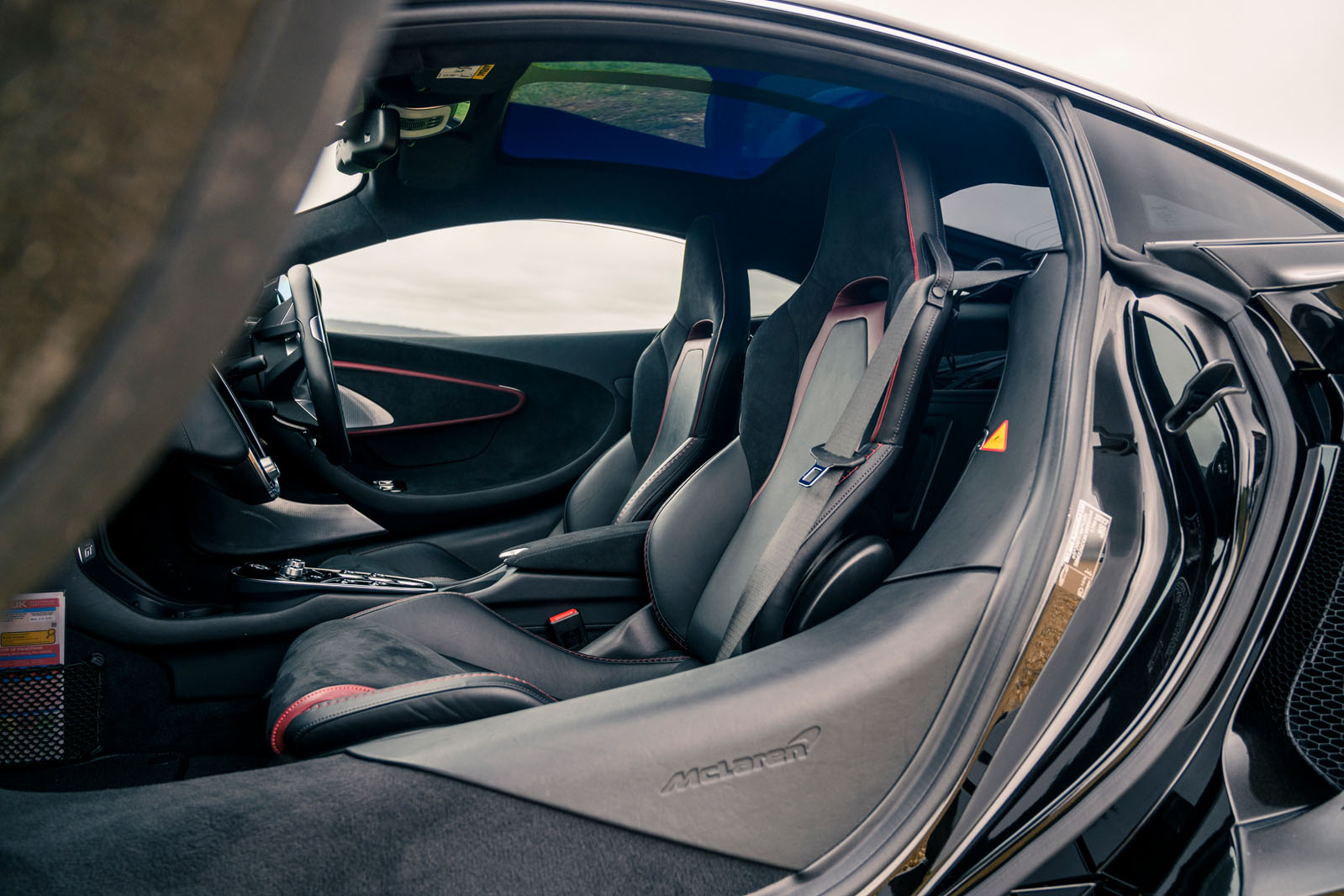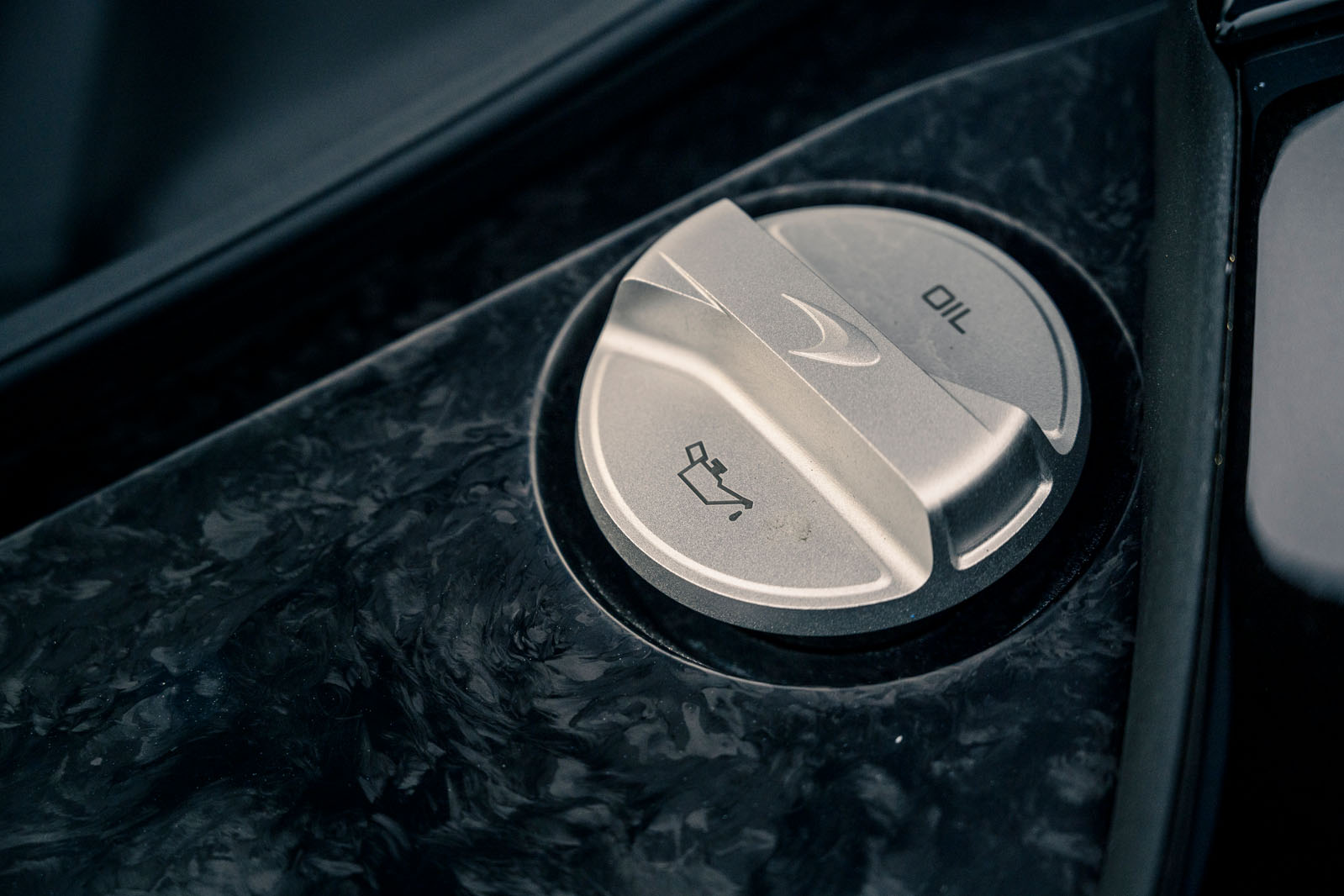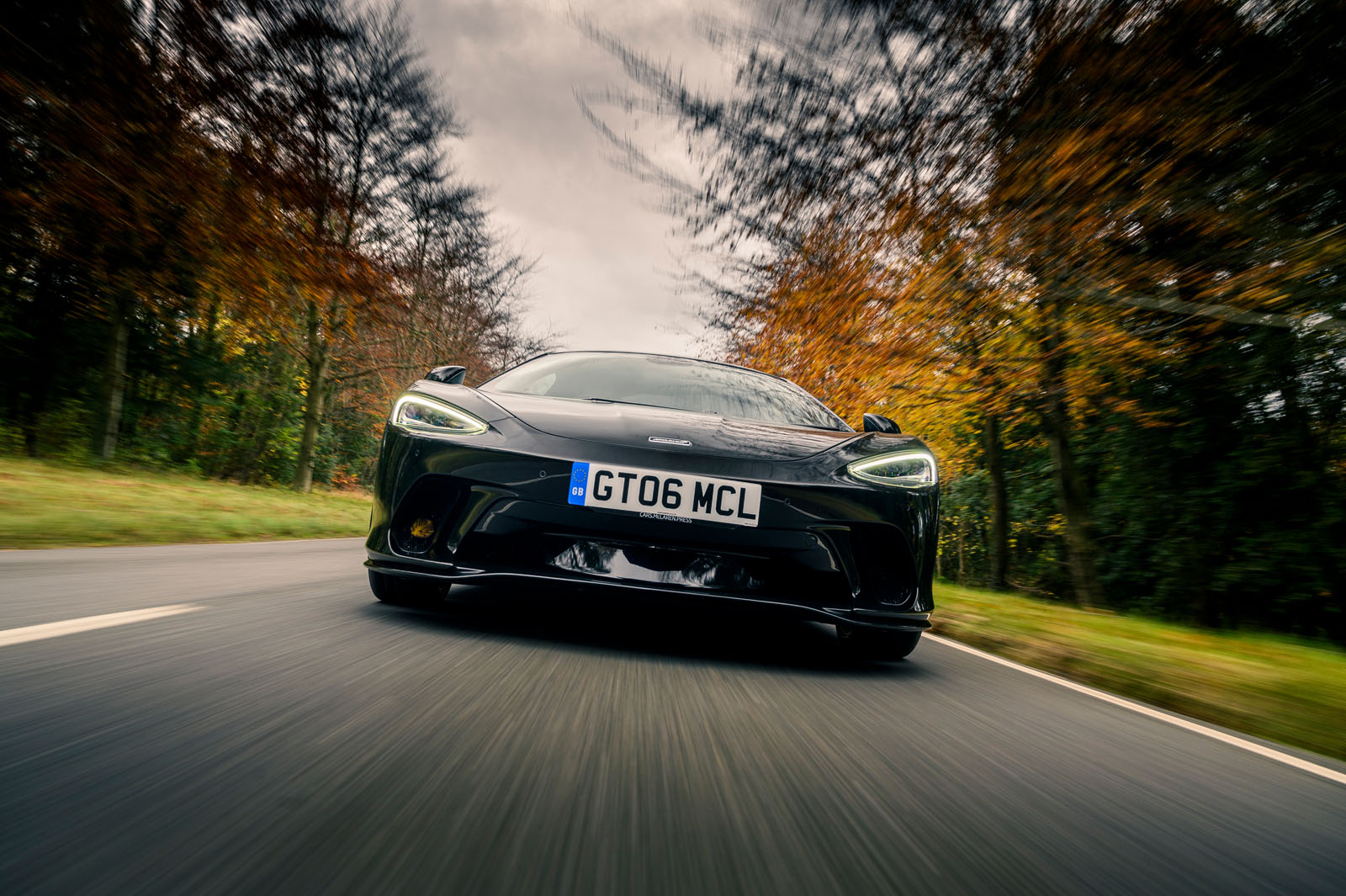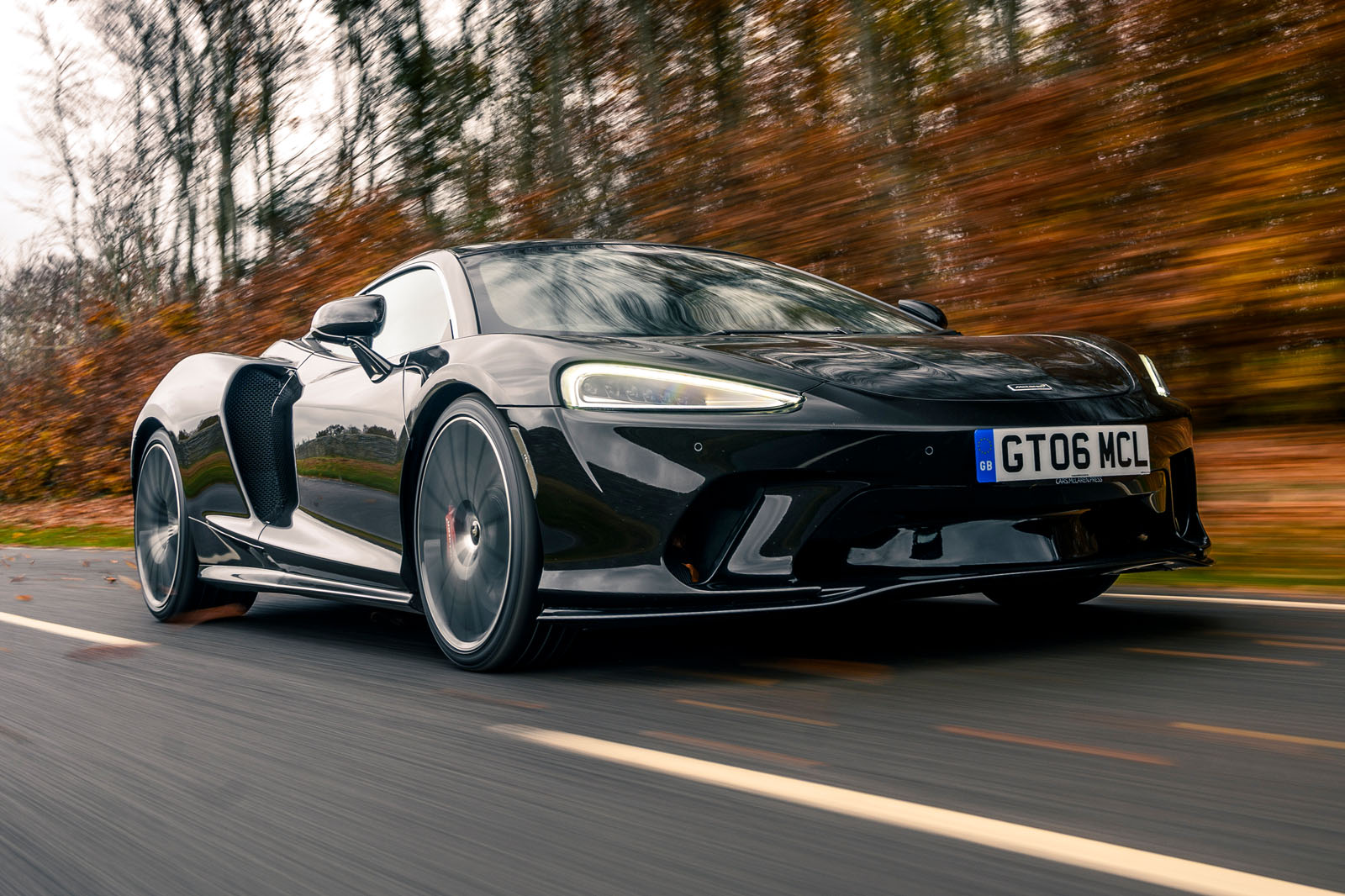Certain inconveniences are inevitable when you’re making your way into a low-riding, mid-engined McLaren.
The firm clearly understands very well what they are, and has done its best to manage and mitigate them in the GT. And yet, were you using this car perhaps not every day but regularly, you would quickly come to know them just as well.
McLaren’s upward-and-outward swinging dihedral doors have been made as light and as easy to use as they can possibly be for this car. If you’ve had a McLaren before, you’ll feel the difference. Finding the flap that releases the door takes a bit of head scratching and fumbling around, though – McLaren’s well-established aversion to the exterior door handle evidently enduring still.
Then there’s the wide sill to cross and the inboard-set seat to lever yourself into, a process that isn’t so awkward or physically testing but also didn’t become as intuitive to any of our testers as you might hope in a GT car.
You’ll instantly see where extra effort has been made to enrich McLaren’s habitually fairly sparse standard on cabin ambience. The machined aluminium trim on the steering wheel is conspicuously flashy, likewise the one-piece metallic gearshift paddle just behind it (usually finished in carbonfibre or plastic), which feels pleasingly sharp and cool to the touch.
The ‘metallised’ look to the transmission control buttons and window switches is less convincing, though, and overall the car’s aura of material lavishness is a bit inconsistent. If McLaren was aiming to get up into Bentley, Porsche or Mercedes-AMG territory here, you’d say it is on the way – but has some way still to go.
The driver’s seat is soft and comfortable in itself but, sitting in it a couple of inches higher here than in other McLarens, your extremities (elbows and knees) are likewise displaced upwards a little and want for proper support. Head room is no more generous than the McLaren norm, and the car’s header rail looms quite close to your eyeline, beginning to intrude on forward visibility if you’re tall. Over longer drives, such things make a big contribution to comfort levels. Visibility in other directions is quite good, though.
For carrying capacity, the GT does well for a mid-engined car without equalling the accessible space afforded by a good front- or rear-engined one. A strict two-seater with an open, shallow luggage area running backwards over the engine bay, and a long glass tailgate above it, the GT will admit longer loads like golf clubs and skis surprisingly easily, leaving limited room to pack soft bags around them at the rear. There’s also the separate, 150-litre box in the nose, and limited storage space around the cabin.
It’s still a car in which you might struggle to house either one big suitcase or a couple of smaller ones without putting one in the passenger footwell and longer trips away for two might mean packing light.
McLaren GT infotainment and sat-nav
The 7.0in portrait-oriented touchscreen infotainment set-up on the GT is billed as McLaren’s most sophisticated yet. It is intended to be operated very much like a modern smartphone, with pinch and swipe gestures aiding usability. Most of our testers still struggled with that usability, though, and it was noted particularly that top-level processes like climate control adjustment are made more distracting and difficult by the system than they might be via a range of physical controls.
The navigation system gets real-time traffic information and, while it still seems harder to programme than it needs to be, it directs you clearly and simply. Smartphone mirroring isn’t possible by any means, though, which is disappointing.
For audible entertainment, a four-speaker set-up is provided as standard and is the lightest yet fitted to a McLaren production car. Our test car’s 1200W Bowers & Wilkins premium audio system has crisp, powerful reproduction quality but may have seemed more impressive still in a car with less ambient road noise.


